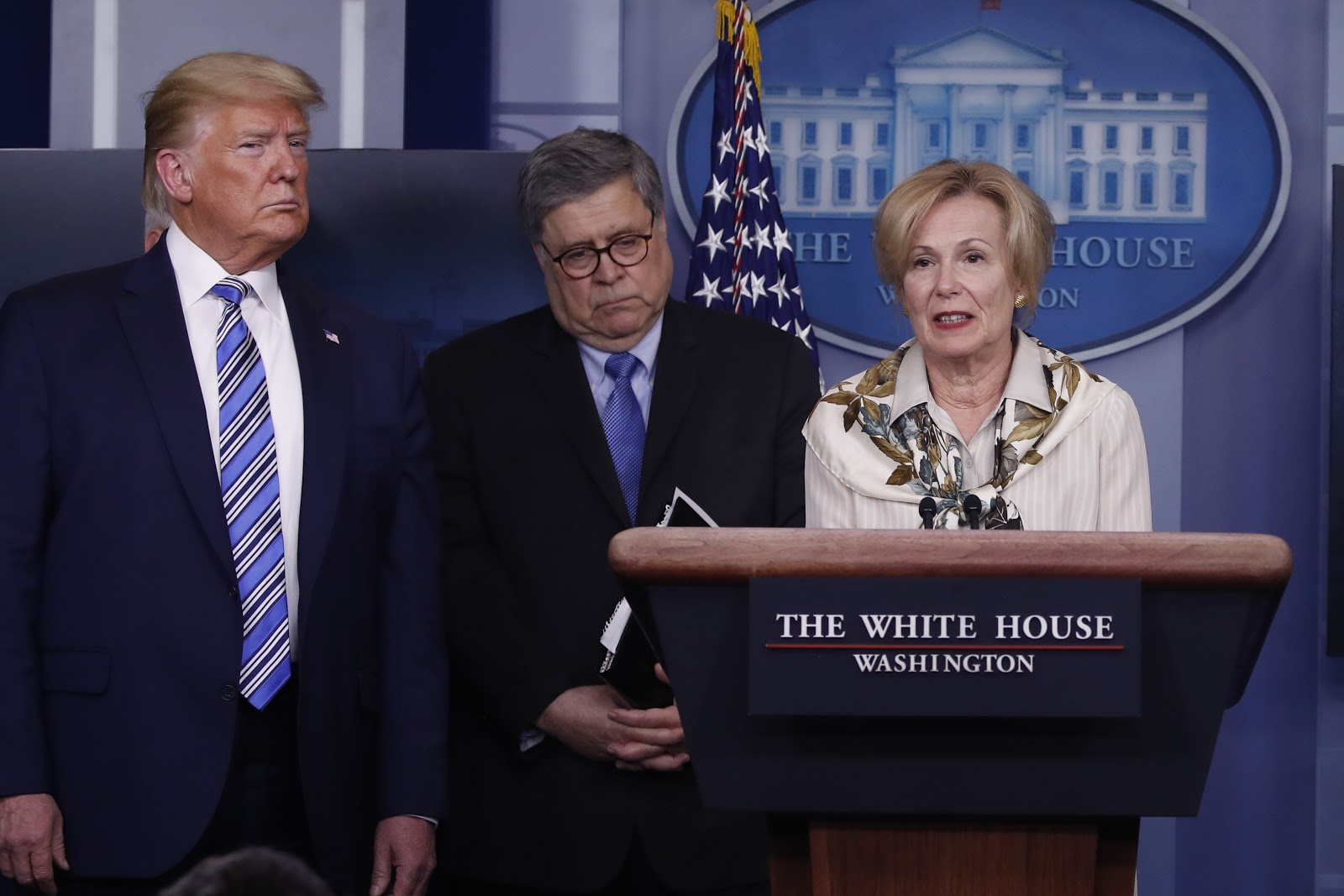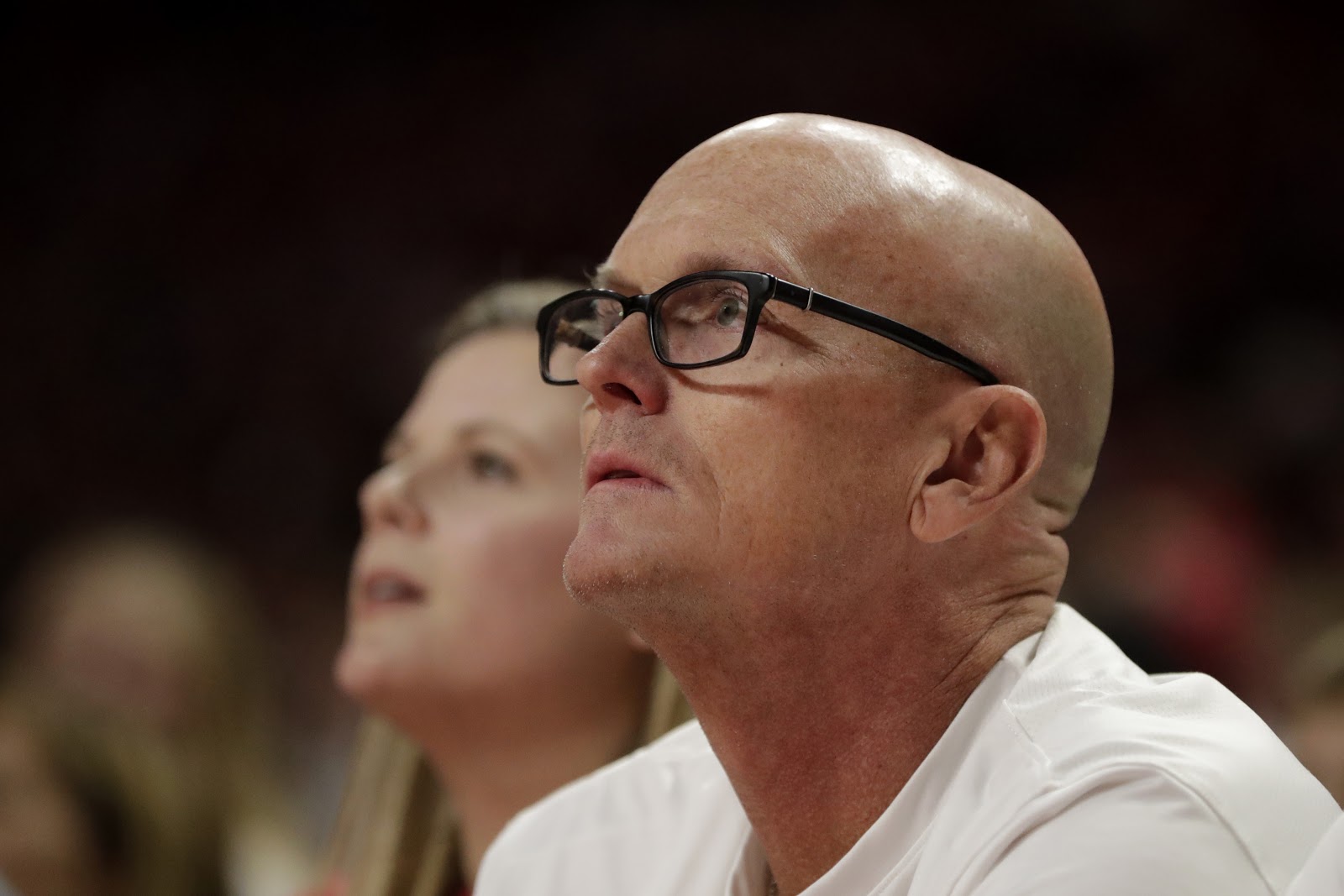The Poynter Report is our daily media newsletter. To have it delivered to your inbox Monday-Friday, click here.
Coronavirus coverage: More is necessary
Keep them coming.
Whether it’s Dr. Anthony Fauci or U.S. Surgeon General Dr. Jerome Adams or, if you’re CNN, Dr. Sanjay Gupta and Dr. Leana Wen, networks should keep bringing in the experts — early and often.
It’s hard to remember a time before the coronavirus. Unfortunately, we might still be in the early stages of this crisis. There’s no end in sight. It could be many months more of constant coverage. But it’s already easy to become so overwhelmed with information that some audiences would rather binge-watch something on Netflix or tune out coronavirus coverage altogether. That’s understandable.
But that does not mean news outlets can take their feet off the pedal. There is no such thing as over-coverage. Networks, websites and newspapers can’t cover this story enough, even if it might cause fatigue and anxiety.
The real danger is that audiences don’t get enough factual information, even when the news is bad. Actually, information during bad news is especially critical. So that’s why it’s important to see someone like Surgeon General Adams continuously invited on national news shows and speaking as he did Monday on “CBS This Morning.”
“The numbers are going to get worse this week,” Adams said. “Things are going to get worse before they get better. And we really need everyone to understand this is serious, to lean into what they can do to flatten the curve.”
“We know it’s going to be a while before life gets back to normal. Here’s what I want America to know: We don’t want to wait for 15 days. … We don’t have a day to waste. We have to focus on today, this hour, right now.”
Adams told NBC’s “Today” show, “This week, it’s going to get bad.”
Meanwhile, there are horrific reports from Italy and dire predictions about what might happen in New York City.
It can be exhausting and depressing, and maybe audiences simply can’t take it in during every waking hour. But journalists must keep publishing the information as it’s available — as somber as it can be. That news is more critical than anything else right now.
On the other hand

President Donald Trump and Attorney General William Barr listen as Dr. Deborah Birx, White House coronavirus response coordinator, speaks Monday. (AP Photo/Alex Brandon)
Interesting to note that both NBC and CBS, just minutes into Monday’s White House coronavirus task force press conference, cut away to go to their national nightly news programs. ABC, meanwhile, stayed with the conference.
I don’t blame NBC or CBS for switching. They put a great deal of work into their news broadcasts and offer valuable information. Those who wanted to see the press conference in full had plenty of other options.
But what about this idea of networks carrying live press conferences?
In Monday’s Poynter Report, I advocated for networks to continue airing the official coronavirus press conferences that President Donald Trump and his coronavirus task force have been holding daily. Many pushed back against that idea on Twitter, mostly concerned that Trump, too often, passes along wrong or deceitful information that could be misleading and even dangerous to the public — such as when he touts unproven medicines or suggests that the “cure cannot be worse than the problem.”
New York University journalism professor and media observer Jay Rosen, who was especially critical of my position on his Twitter feed, argued in a column that Trump is too unreliable to air his press conferences live. Among other things, Rosen suggested that no speech, rally or press conference involving the president should be shown live.
He wrote, “The risk of passing along bad information is too great. Instead, we will attend carefully to what he says. If we can independently verify any important news he announces we will bring that to you — after the verification step.”
Rosen also wrote that if Trump were to say something so false that it could not be ignored, the media should offer up a “truth sandwich.” That is, report what is true, highlight Trump’s incorrect statement then follow up again with the truth.
But this would mean that it would be up to NBC, CBS, ABC and so forth to determine which information the public should know and then pass along Trump’s words through that filter. That feels especially dangerous. A better solution is for networks to air the conferences and correct any lies or misleading statements afterward. But to decline to carry press conferences in real-time, when actual policies are being put in place, does not best serve the public.
Look, I get it. These press conferences have problems. Trump has a tendency to contradict his own experts and offer either false hope or empty promises. And now there are reports that Trump is listening more to Fox News pundits worried about the economy than his own medical advisors who are (rightly) concerned about this virus. He seemed, again, on Monday to be downplaying how long the crisis will last, with no science to back up his claims.
Still, if we don’t air Trump’s words in full, it’s easy to argue that the media is actually protecting him by not showing his irresponsible side. At that point, only the good parts would get through and that, perhaps, would give the indication that he’s handling this well even if he is not. Isn’t that dangerous not only for the short-term, but the long-term health of the country?
This debate will continue, but I did want to share the other side of the argument, even while I stand firm in my position.
[the_ad id=”667872″]
Trump’s virtual town hall
Fox News Channel will host a two-hour virtual town hall with President Trump and leading members of the White House coronavirus task force today from noon to 2 p.m. Fox News’ Harris Faulkner and Bill Hemmer will co-moderate. Trump is expected to join the forum at 12:30 p.m. to answer questions from viewers.
Pay it forward?
Many news outlets have dropped their paywalls for coronavirus coverage. But not everyone. So, that begs the question: What’s the right thing to do? Should news outlets — and, in particular, local newspapers — drop their paywalls for stories related to the coronavirus as a public service to readers? Or should they continue to charge because, after all, it still is a business and journalism isn’t free, just as groceries and gas aren’t free?
Poynter’s Kelly McBride and Rick Edmonds debated the topic.
Earlier this month, Seattle Times executive editor Michele Matassa Flores wrote that despite offering coronavirus coverage for free, “this coverage has drawn new subscribers at record levels.”
Peter Kovacs, editor of The Advocate and Nola.com in Louisiana, wrote Monday that online traffic is running three to four times above normal and that the “pace of new digital subscriptions has more than doubled in March, even though we are making our coronavirus coverage available free of charge as a public service.”
Nevertheless, Kovacs added, “This week, we will be temporarily furloughing about a tenth of our 400-member workforce, and the rest of us will begin four-day workweeks. Our newsroom, with about 120 employees, is the largest in Louisiana, and the furloughs will chiefly impact people who cover sports and social events, which have been curtailed.”
While such cuts in Louisiana, as well as other news outlets across the country, have more to do with a coronavirus-related drop in advertising as opposed to a lack of digital subscriptions, it does show how important every dollar is.
Still, these are unusual times, unlike anything we’ve seen before. While it’s tempting for news outlets to charge for their product, just as grocery stores still charge for absolute essentials such as food and toilet paper, information for the public good is too critical to put behind a paywall. In the end, news outlets can hope that their outstanding journalism, as well as the gesture of making need-to-know information available to audiences, will encourage citizens to support their work by buying subscriptions — if not now then when this crisis passes.
Remembering the seniors
You know who has been a joy to watch during this crisis? ESPN’s Scott Van Pelt, who is doing his best to use sports as a distraction from the daily grind of the coronavirus. The highlight of his “SportsCenter” broadcasts has been #SeniorNight, which honors high school and college senior athletes whose careers are coming to an end without the traditional sendoffs.
When introducing the #SeniorNight concept, Van Pelt said that after a recent show, “Our heads were reeling a little bit. We were talking about what we could do that might feel positive in the midst of all this coronavirus cancellation. Life has mostly been put on hold.”
So Van Pelt takes clips and photos sent in by viewers to honor outgoing seniors who are otherwise missing out on what should have been poignant ends to their athletic careers.
This inspired work comes on the heels of Van Pelt’s sensational performance on the night the NBA suddenly announced its season was postponed. That was only two weeks ago, even if it feels like it’s been months.
The Athletic’s Richard Deitsch profiled Van Pelt’s work during the coronavirus. (Note: The Athletic is behind a paywall.)
[the_ad id=”667878″]
Incomplete pass
ESPN’s hope that former NFL great Peyton Manning would join the broadcast booth of “Monday Night Football?” Forget it.
According to New York Post sports media columnist Andrew Marchand, Manning has turned down ESPN. The network’s options are dwindling if it still hopes to replace the much-maligned duo of Joe Tessitore and Booger McFarland. Marchand says possibilities include play-by-play announcer Steve Levy and maybe even college football’s Chris Fowler, while analyst options could include Brian Griese, Louis Reddick and Kurt Warner.
Or, ESPN could do another year with Tessitore and McFarland and then see if a current player such as Drew Brees or Philip Rivers retires and makes the leap to broadcasting.
Hot type
- President Trump has routinely called COVID-19 the “Chinese virus.” Here’s the impact of that kind of rhetoric: Chinese Americans are being spat on, yelled and attacked by bigots who are blaming China for the coronavirus. The New York Times’ Sabrina Tavernise and Richard A. Oppel Jr. show the frightening effects of such disgusting language. (It should be noted that Trump tweeted support for Chinese Americans Monday, and echoed that support at his daily press conference.)
- In another interesting New York Times piece, Stuart A. Thompson and Yaryna Serkez look at “How Has Your State Reacted to Social Distancing?”
- Check out The New Yorker, which was produced entirely remotely for the first time in the 95-year history of the magazine.
Have feedback or a tip? Email Poynter senior media writer Tom Jones at tjones@poynter.org.
More Poynter resources
- Covering COVID-19 with Al Tompkins (daily briefing).
- Coronavirus Facts Alliance (global database of fact-checks).
Want to get this briefing in your inbox? Sign up here.









